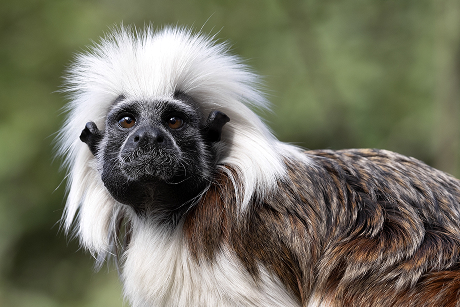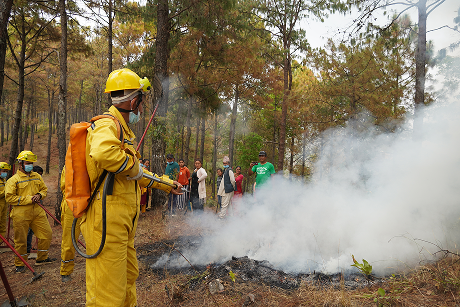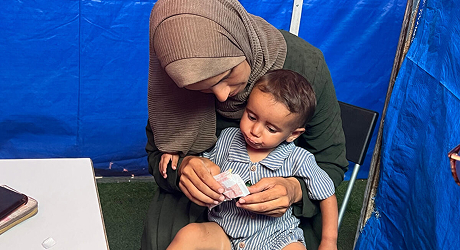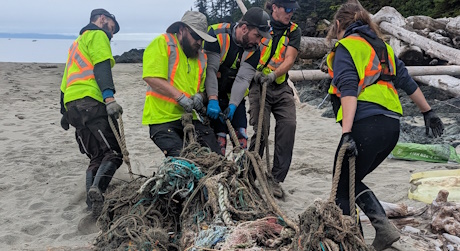Footprints Project
Since 2005, travelers like you have helped us change the world through micro-donations.
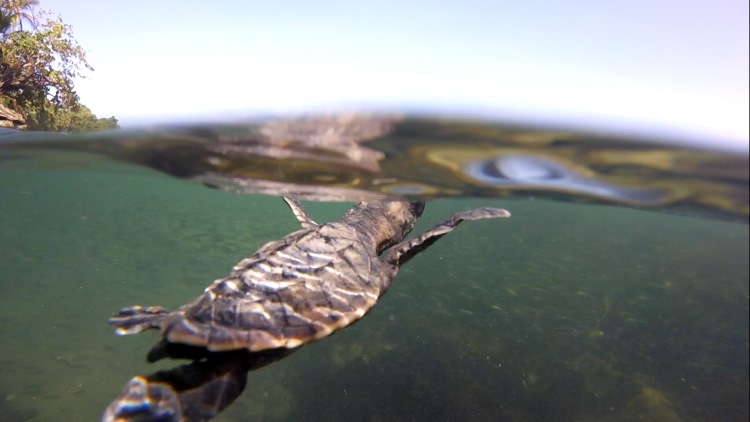
-
A total of
7697
Travelers
-
donated
$20001.36
(100% funded) -
to help improve
Environment
-
impacting
2
people -
in
Panama
Project Background
Since 2003, the Sea Turtle Conservancy has conducted a community-based sea turtle research and protection program in the Bocas del Toro region of Panama, an archipelago that includes some of the most important nesting sites for endangered leatherback and hawksbill sea turtles in the world.
The majority of this project was carried out during the 2021 leatherback and hawksbill nesting seasons in Bocas del Toro Panama. All nesting data presented in the report pertains to this time period, though some activities continued well into 2022. Support from World Nomads and the Footprints Network provided essential resources to carry out a program with the following primary aims and objectives:
Project Aims
(A) To secure accurate baseline information about levels of nesting by endangered sea turtles at the newly discovered nesting site at Bocas del Drago, Panama. Also document levels of poaching.
(B) Inspire members of the local community to participate in turtle conservation by training community members to carry out the turtle monitoring and protection program at Bocas del Drago.
(C) Establish an in-water monitoring program to assess the population of hawksbill turtles inhabiting a nearshore reef off the project beach, and also begin documenting the impact of illegal turtle hunting on the reef.
(D) Gradually eliminate illegal turtle poaching at Bocas del Drago and its offshore reef in order to promote the full recovery of local leatherback and hawksbill turtle populations.
(E) Develop ecotourism at Bocas del Drago as an alternative, sustainable source of income for the local community.
Project Objectives
(A) Train a select group of local community members how to track sea turtle nesting, mark nests and collect scientifically accurate data for long-term tracking of sea turtle health and abundance at Bocas del Drago.
(B) Implement a monitoring program to document and track the rate of illegal poaching of sea turtles from the nesting beach and from an offshore reef at Bocas del Drago.
(C) Develop and promote ecotourism at Bocas del Drago in a manner that benefits the local community and demonstrates that sea turtles are worth saving because ecotourism is more sustainable than harvesting turtles.
Project Results
With generous funding from the Footprints Network and World Nomads, Sea Turtle Conservancy conducted a monitoring program at Drago beach. Thanks to this program we can know more about the nesting trends at the beach, the fate of those nests and the illegal activities related to sea turtles in the area. In addition, the STC has done an in-water program to determine where the turtles are in the reef, what they are doing and which stage of life cycle they are in.
A local indigenous community member was hired to conduct the surveys in the area and six biologists from other countries were selected to participate in our Research Assistant Program to help us in the night patrols, surveys, and the in-water program. To ensure that data were collected according to STC’s established protocol, staff held a three-day training workshop for the new monitor and the research assistants to teach them about sea turtle biology, the correct method for applying flipper tags, taking standard carapace measurements, identifying sea turtle species, and marking nests using triangulation. Once they were trained the local beach monitor and the research assistants conducted daily track surveys and night patrols under the Drago Beach Coordinator supervision.
Track surveys
Daily track surveys were conducted in the 4km of the study area. The first 2km have a beautiful white sand beach (Drago) and the other 2km are composed of several small beaches with limited access and no connection between them (Mimitimbi).
The next table (Table 1) includes the final number of nests of each species. Table 2 shows the number of nests that were disturbed by poachers, dog predation or due to the erosion and were not able to finish the incubation period to produce sea turtle hatchlings.


In addition, during the daily surveys the STC local monitor found three hawksbills flipped over, probably by poachers, and he released them. Tracks of two poached hawksbill were found but no sign of the turtles.
Something new in the area was to find another two dead turtles dead at the beach, in this occasion predated by dogs from the closer community. To fight against this new threat, the STC developed two strategies. The first was to put nets on top of the nests to avoid the dog’s predation. They were very effective – none of those nests were predated. The second strategy was to coordinate a dog neuter clinic at the Drago community to control the dog population and educate the locals about how to control their dogs at the beach.
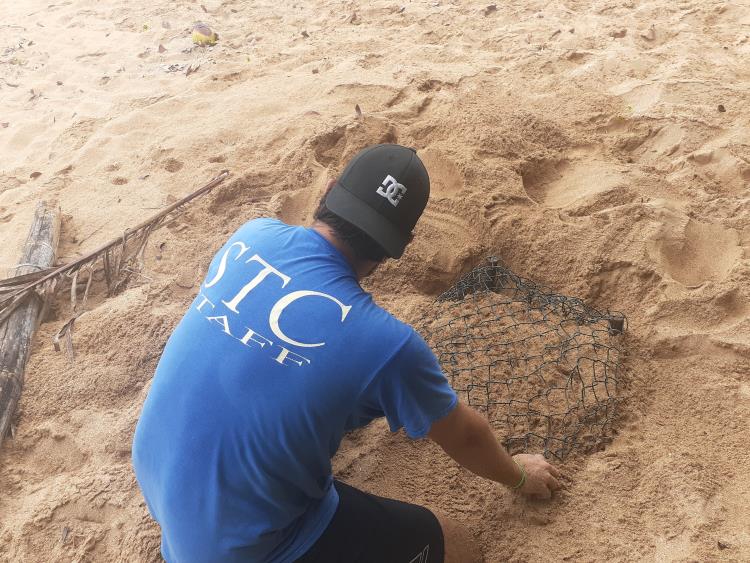
Night patrols
The objective of the night patrols is to find as many turtles as possible to tag them, measure them, check their body condition, and mark the nest to check it two months later to know the survivor success.
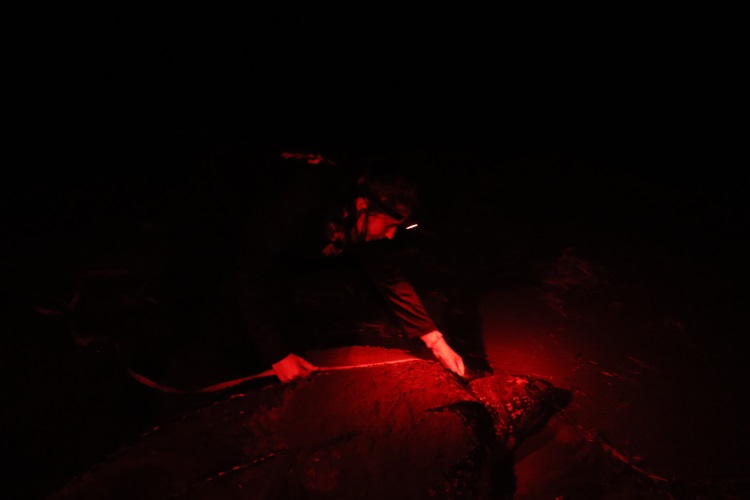
One green turtle, eight leatherbacks and 24 hawksbills were fully worked up during the night patrols. Their average size was approximately 86 cm for the hawksbill and 143 cm for the leatherbacks. The only green turtle found measured 106 cm.
Thanks to the presence of the STC workers at the beach the frequency of illegal activities decreases. Even knowing that the STC workers have no legal authority, the poachers know that we are there, and we will alert the police or park rangers if something happens.
Hatchlings productivity and sex ratio
Because a sea turtle’s sex is determined by the average temperature of the sand in which it incubates, rising temperatures may be producing skewed sex ratios among hatchling sea turtles, resulting in greatly more female turtles than is normal in certain sea turtle populations. The pivotal nest temperature that will determine a sea turtle’s sex is both inherited and dependent on species, but the range of temperatures that can produce an all-female or all-male nest is very small – within a few degrees Celsius. STC is in the early stages of developing strategies to evaluate physiological markers of hatchlings to verify whether nests are producing more females than males at its Bocas del Toro study sites, and intends to employ these strategies in the future, when more nest temperature data is available.
A total number of 91 nests were marked in 2021 (18 leatherbacks and 73 hawksbills) to study the hatching and emerging success (Table 3). 33 of those hawksbill nests were selected to develop the incubation temperature study using the dataloggers to measure the temperature inside the nest and estimate the sex ratio that is being produced at the beach.

Dog neuter clinic
Due to the problems that the dogs were creating at the beach (predation of nests and nesting females) the STC staff contacted locals and foreigner veterinarians to support a neuter clinic at the Drago community. Three veterinarians conducted the clinic, and 31 dogs were fixed to control the population of dogs at the beach. In addition, all the locals that arrived at the clinic were informed about the dog predation at the beach and the importance of protecting a critically endangered animal such as the hawksbills.
Environmental education
Environmental education activities were conducted in the school of the Drago community to teach about the conservation, biology, and threats to sea turtles in the area. Those talks were given by the environmental education coordinator to groups of students between the ages of seven to twelve years old.

What’s next?
The project is being established by STC as a long-term research, conservation, and community engagement program in this part of Panama. Sea turtles are very slow-maturing animals, which means that effective conservation work must involve many years of protection efforts to see population increases. Additionally, the systemic threats faced by sea turtles in this part of Panama will not be eliminated quickly. STC is committed to continuing this project for many years in order to protect and recover important sea turtle populations in partnership with the local community.
Can I visit this project?
Yes, STC recently established an eco-volunteer program that allows people to spend a week or more participating in our sea turtle monitoring and protection programs at Soropta Beach and Bocas del Drago, Panama. One can learn about these opportunities on STC’s website at www.conserveturtles.org/leatherback-turtle-eco-volunteer-program/.
Traveling soon? When you buy travel insurance with us, you can make a contribution towards a cause you care about.
Get a quote